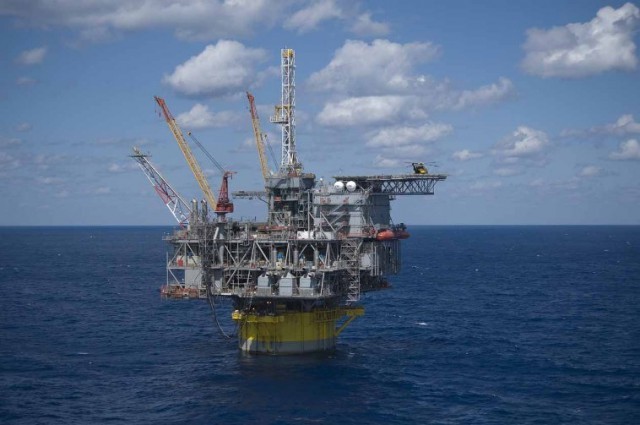
There are signs of a sea change ahead for the deepwater rig market as rates soften and, so it appears, contract terms might be shortening.
For a decade and more, one has been used to news from this or that drilling company or that or this oil company about multi-year contracts at what at first seemed to be extra-ordinary dayrates; first passing the $300,000 threshold, then $400,000, then $500,000 and even $600,000.
Typically, contracts have been of such a length and so valuable that multiple orders for new rigs could be made by drilling contractors.
And such deals are still being struck, thus the order books for Far East yards especially continue to bulge.
However, Ensco was last month also the bearer of less encouraging tidings as its powerful Ensco 8505 semi-submersible’s latest contract will run for nine months and at a rate way below what Anadarko is currently coughing up to Ensco ($495,000) per day.
It is not the only company apparently now willing to set its “this is the price so take it or leave it” approach of the past few years and haggle.
With IHS Petrodata cited as the source, it has been reported that Noble Corporation is the low bidder on a tender by Mexican state Pemex, offering its rig Noble Driller for $210,000, which is half the $415,000 per day currently being coined in the US Gulf working for Marubeni Oil & Gas.
While it is suggested that Noble may be doing this knock-down offer to keep the rig from being cold-stacked, the strategy could ultimately backfire on the company.
Come to think, it’s not many years since Transocean kept a couple of its Galaxy rigs stacked (one in the Cromarty Firth and, I think, the other in the Tay) in a bid to ensure that rates paid for premium jack-ups in the North Sea stayed high.
UBS has just published a market report called “Catching a Falling Knife”. In it, analyst Angie Sedita says of the current deepwater drilling market: “We expect more negative data points to come; this is just the beginning.”
She is predicting dayrate declines of 30-45% as contractors compete in a market that is tightening due to project delays and disappointing exploration results in some geographies.
Sedita: “The consensus view is that the slowdown in demand is a “pause” while we believe that rig demand will remain sluggish well into 2015.
“With 60 rigs up for contract renewal in 2014, we believe as many as 15-25 rigs could experience protracted idle periods.”
She asserts that ultra-deepwater newbuilds will “struggle to find contracts”. And for good reason. Currently, 10 of the 30 semi-submersibles and drillships due to enter service this year are without work.
The situation is due to worsen next year, with 15 of the 22 rigs scheduled for delivery currently without maiden contracts.
One company doing well and with a huge $15.4billion work backlog for its fleet of drillships and high spec semi-submersibles is Seadrill. Analysts have clocked that not all of this company’s new-builds have starter-pack contracts.
The worry isn’t so much this year as the Seadrill fleet is very busy, with little spare capacity.
Next year, the situation is set to change sharply. Currently, the Norwegian drilling major will have to fight to secure contracts for the 34% of available capacity in 2015 as well as the 53% of 2016 capacity.
It is being speculated that this uncontracted capacity could cause Seadrill problems in funding its massive dividend. By the same token the changing market conditions will cause similar problems for its competitors.
And so it seems that a buyer’s market is in prospect; a chance for oil companies to haggle . . . drive down prices. The boot appears to be transferring to the other foot and it is something that some oil companies will be relishing; a chance to get back at those greedy drilling contractors.
According to recent data from Bloomberg there were only five new ultra-deepwater rig contracts awarded last quarter. That said, Motley Fool reported that the dayrates of those contracts were 18.1% higher than the previous contracts.
It cites Noble Drilling as a good example. The company was successful in winning new $500,000-plus dayrate contracts for two of its drill ships, and of very diverse ages.
The innovative ice-to-tropics, compact Noble Bully II barely three years in service, was awarded a 456-day contract by Shell at a new rate of $541,000.
Meanwhile, the Clyde Boudreaux, which was built in 1987 was awarded a 153-day contract at a day rate of $515,000. These rates represented increases of 12% and 24%, respectively.
And the quarter’s positive news doesn’t end there as the drillship Ensco DS-9 secured a three-year (1,096 days) deal at $550,000 dayrate.
So what might all of this mean for exploration on the traditionally high-cost North West Europe Continental Shelf? In a nutshell it is likely to benefit the Norwegians more than the Brits as NCS operators make heavier use of premium rigs, in large part because a significant number of exploration targets and new field developments are classed as deepwater.
On the UKCS, benefits would appear to be much more limited and confined to the Atlantic Frontier.
For either province, a sharp drop in premium rig rates could only be good news, not least because some smaller companies are really struggling to afford to drill at all in the currently somewhat overheated market.
Even if the current market softening turns out to be short-lived and the boom resumes, it is only a matter of time before the world becomes oversupplied with super drilling machines.
Then watch a tsunami of change sweep the deepwater drilling community.
Recommended for you
